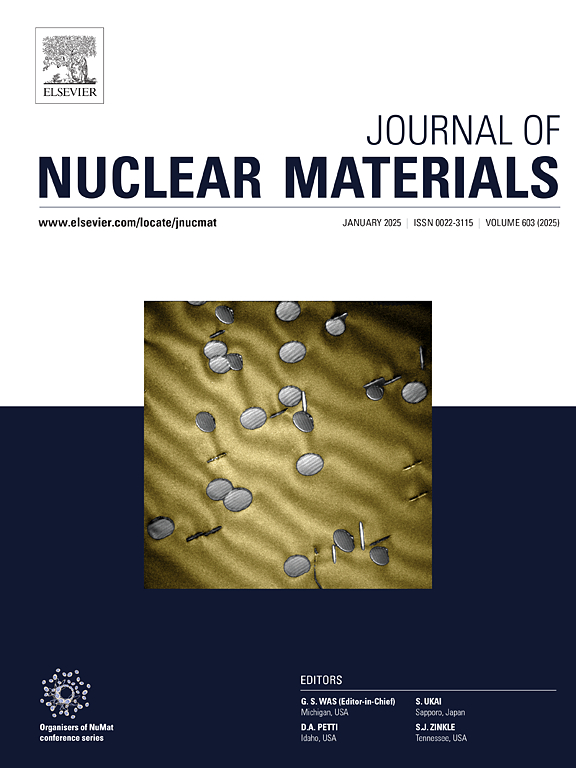采用三点弯曲试验确定Zr-2.5%Nb压力管材料中氢化物重定向的阈值应力
IF 3.2
2区 工程技术
Q3 MATERIALS SCIENCE, MULTIDISCIPLINARY
引用次数: 0
摘要
在zr合金管状构件中,垂直于施加的环向应力方向的氢化物形成更为有害,因为它降低了断裂韧性,增加了延迟氢化物开裂(DHC)的速度。径向氢化物的形成需要在管的横向有最小的阈值应力(σth)。通常,径向氢化物形成的阈值应力是使用锥形规拉伸样品确定的,这是一个劳动密集型的过程,包括管压扁、温轧、应力消除热处理和实验后的样品切割以进行金相分析。此外,由于扁平化过程,从传统锥形量规样品中获得的值往往显著高于其他方法。为了克服这一问题,提出了一种利用三点弯曲试样结合高斯过程回归(GPR)确定阈值应力的新方法。对阈值应力进行了评估,并与其他各种不同方法得到的阈值应力进行了比较,突出了所提方法的有效性。本文章由计算机程序翻译,如有差异,请以英文原文为准。

Novel use of three-point bend test for determining the threshold stress for hydride reorientation in Zr-2.5%Nb pressure tube material
The formation of hydrides perpendicular to the applied hoop stress is more detrimental in Zr-alloy tubular components, as it reduces fracture toughness and increases the velocity of Delayed Hydride Cracking (DHC). The formation of radial hydrides requires a minimum threshold stress ()in the transverse direction of the tube. Conventionally, the threshold stress for radial hydride formation is determined using tapered gauge tensile samples—a labor-intensive process involving tube flattening, warm rolling, stress-relief heat treatment, and post-experiment sample slitting for metallographic analysis. Additionally, values obtained from conventional tapered gauge samples tend to be significantly higher than those from other methods due to the flattening process. To overcome this, a novel method is proposed for determining the threshold stress using three-point bend samples combined with Gaussian Process Regression (GPR). The threshold stress is evaluated and compared with those obtained from various other different methods, highlighting the effectiveness of the proposed approach.
求助全文
通过发布文献求助,成功后即可免费获取论文全文。
去求助
来源期刊

Journal of Nuclear Materials
工程技术-材料科学:综合
CiteScore
5.70
自引率
25.80%
发文量
601
审稿时长
63 days
期刊介绍:
The Journal of Nuclear Materials publishes high quality papers in materials research for nuclear applications, primarily fission reactors, fusion reactors, and similar environments including radiation areas of charged particle accelerators. Both original research and critical review papers covering experimental, theoretical, and computational aspects of either fundamental or applied nature are welcome.
The breadth of the field is such that a wide range of processes and properties in the field of materials science and engineering is of interest to the readership, spanning atom-scale processes, microstructures, thermodynamics, mechanical properties, physical properties, and corrosion, for example.
Topics covered by JNM
Fission reactor materials, including fuels, cladding, core structures, pressure vessels, coolant interactions with materials, moderator and control components, fission product behavior.
Materials aspects of the entire fuel cycle.
Materials aspects of the actinides and their compounds.
Performance of nuclear waste materials; materials aspects of the immobilization of wastes.
Fusion reactor materials, including first walls, blankets, insulators and magnets.
Neutron and charged particle radiation effects in materials, including defects, transmutations, microstructures, phase changes and macroscopic properties.
Interaction of plasmas, ion beams, electron beams and electromagnetic radiation with materials relevant to nuclear systems.
 求助内容:
求助内容: 应助结果提醒方式:
应助结果提醒方式:


